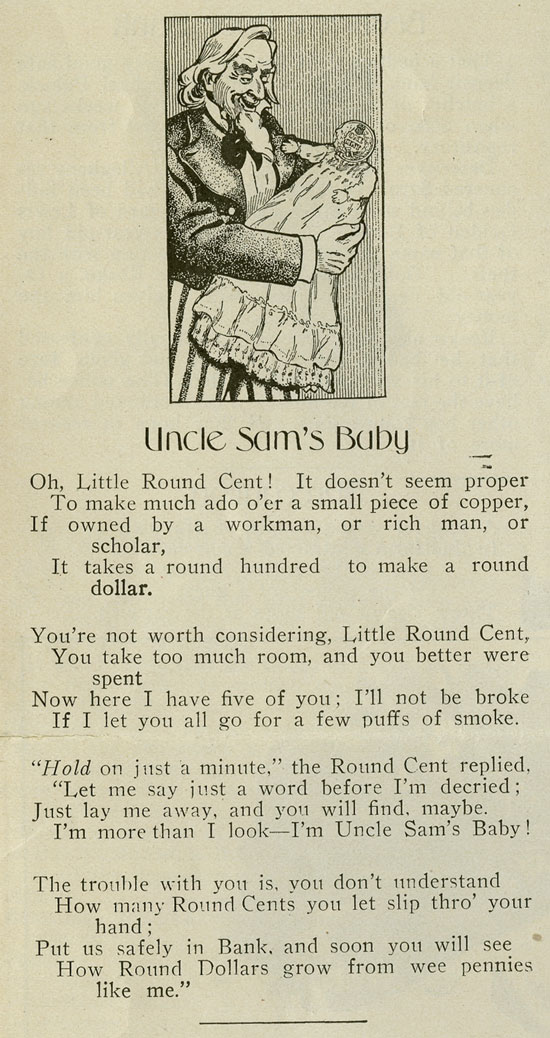Beginning in the late 19th century, schools began teaching children the value of thrift. Teachers explained the process of how to save and demonstrated how those savings could grow with time. School savings banks emerged that would collect and hold money for the students. Many of these initiatives stopped after World War II.
This week’s That’s History focuses on the issue of savings and thrift. The down economy is a nightly topic in the news and many analysts believe that spending more will help it improve. Jonathan Zimmerman asserts that in order to spend, people must first be taught how to save. To read his article, "Saving before they're earning," click here.
The Historical Society of Pennsylvania collections include a variety of sources on saving and thrift, including the papers of Sara Oberholtzer who was one of the largest advocates of the school savings bank.
Suggested library materials:
- Thrift Tidings, ed. By Sara Louisa Oberholtzer, numbers from January 1907 (through 1923)
- Five Practical Plans for Operating a School Savings Bank, with forms, state laws and statistics, issued by The Savings Bank Section, American Bankers’ Association, c. 1913
- School Savings Banks: The Philosophy of the Question and the Result Achieved, issued by the Pittsburgh Bank for Savings in 1898
- Home Training Bulletin No. 7: Teaching the Girl to Save, pamphlet by William A McKeever, copyright 1911
- Thrift: A Short Text Book for Elementary Schools of Philadelphia, issued by the Educational Committee of the Chamber of Commerce, Philadelphia, 1917
Please visit the library at 1300 Locust Street or search our collections online.


